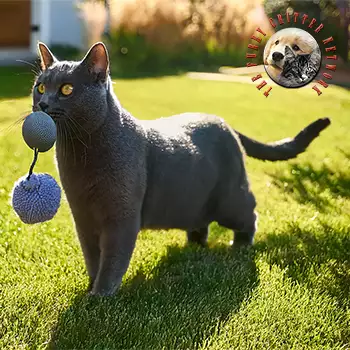The Chartreux history mingles documented facts with romantic legends, creating a rich narrative that spans centuries of French history. The breed's origins trace back several hundred years in France, where blue-gray cats with woolly coats existed as working cats, particularly valued for their mousing abilities. These cats lived in various French regions, earning their keep by controlling rodent populations in homes, shops, and possibly monasteries. The earliest definitive written references to cats matching Chartreux descriptions date to the 16th century.
The popular legend connecting Chartreux to Carthusian monks of the Grande Chartreuse monastery near Grenoble has become inseparable from breed lore, though concrete historical evidence of monastic breeding programs remains elusive. The story suggests monks bred these cats for companionship and rodent control, with the cats' quiet nature suiting monastic life perfectly. Whether or not monks actually bred them systematically, the association has persisted and shapes how many people think about the breed's heritage. The name Chartreux may derive from this connection, or alternatively from a type of Spanish wool that shares the coat's texture and color.
Documented Chartreux breeding programs began in the early 20th century in France. In the 1920s, two sisters named Christine and Suzanne Léger started a breeding program on Belle-Île-off-Brittany using feral cats from the island that matched Chartreux descriptions. They registered their cattery name "de Guerveur" and worked systematically to establish breed type and consistency. These early breeding efforts established foundation lines that influenced the breed's development significantly. Other French breeders joined preservation efforts during this period, recognizing the value of maintaining this distinctive native cat.
The breed gained official recognition in France during the 1930s, with the first breed standard written and acceptance by French cat registries. Chartreux began appearing at European cat shows, drawing attention for their unusual appearance and gentle temperament. The breed's development proceeded steadily through the 1930s as breeders refined type and worked to establish consistent characteristics across lines.
World War II devastated European cat breeding programs, and Chartreux suffered near extinction. The war years saw many breeding cats lost, with programs abandoned as people struggled with more immediate concerns. By war's end, very few Chartreux remained, and the breed teetered on the edge of disappearing completely. Post-war reconstruction efforts by dedicated French breeders saved the Chartreux from extinction. These breeders located surviving cats, carefully documented bloodlines, and rebuilt breeding programs while working to maintain traditional breed characteristics.
To increase genetic diversity and rebuild population numbers, some breeders incorporated blue Persian, British Blue, and Russian Blue crosses during post-war reconstruction. These outcrosses helped stabilize the breed but also created confusion about Chartreux identity and type. By the 1970s, breed standards tightened to clearly differentiate Chartreux from British Shorthairs, with which they had been confused or interbred in some regions. The FIFe eventually declared Chartreux and British Blues as separate breeds requiring distinct standards, ending the practice of interbreeding them.
The first Chartreux arrived in the United States in 1970, imported by Helen and John Gamon of California. American breeders embraced the breed, and it gained provisional recognition from The Cat Fanciers' Association in 1987, achieving full championship status in 1987. The International Cat Association also recognized the breed, helping establish it in North America. American Chartreux breeding programs maintain close connections with European breeders to preserve genetic diversity and breed characteristics.
Today, the Chartreux remains relatively uncommon worldwide but enjoys devoted followings in France, North America, and other regions. The breed faces ongoing challenges maintaining genetic diversity due to small population numbers, requiring careful breeding management. International cooperation among breeders helps preserve this historic breed while maintaining health and type. Modern Chartreux continue embodying the characteristics that drew admirers centuries ago - distinctive blue coats, sweet temperaments, and quiet companionship. The breed stands as a living link to French feline history and a testament to dedicated preservation efforts by breeders who refused to let this unique cat disappear.

